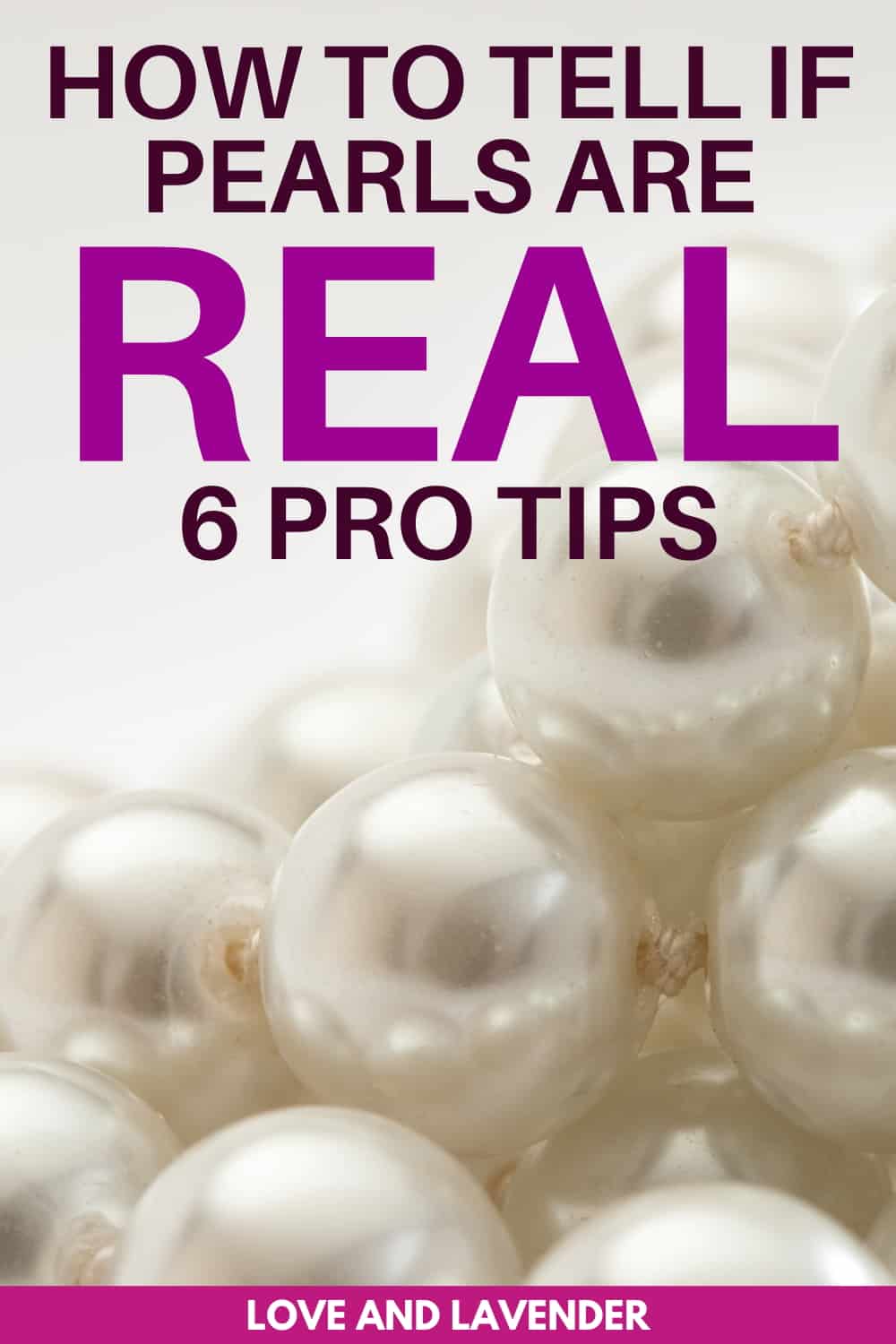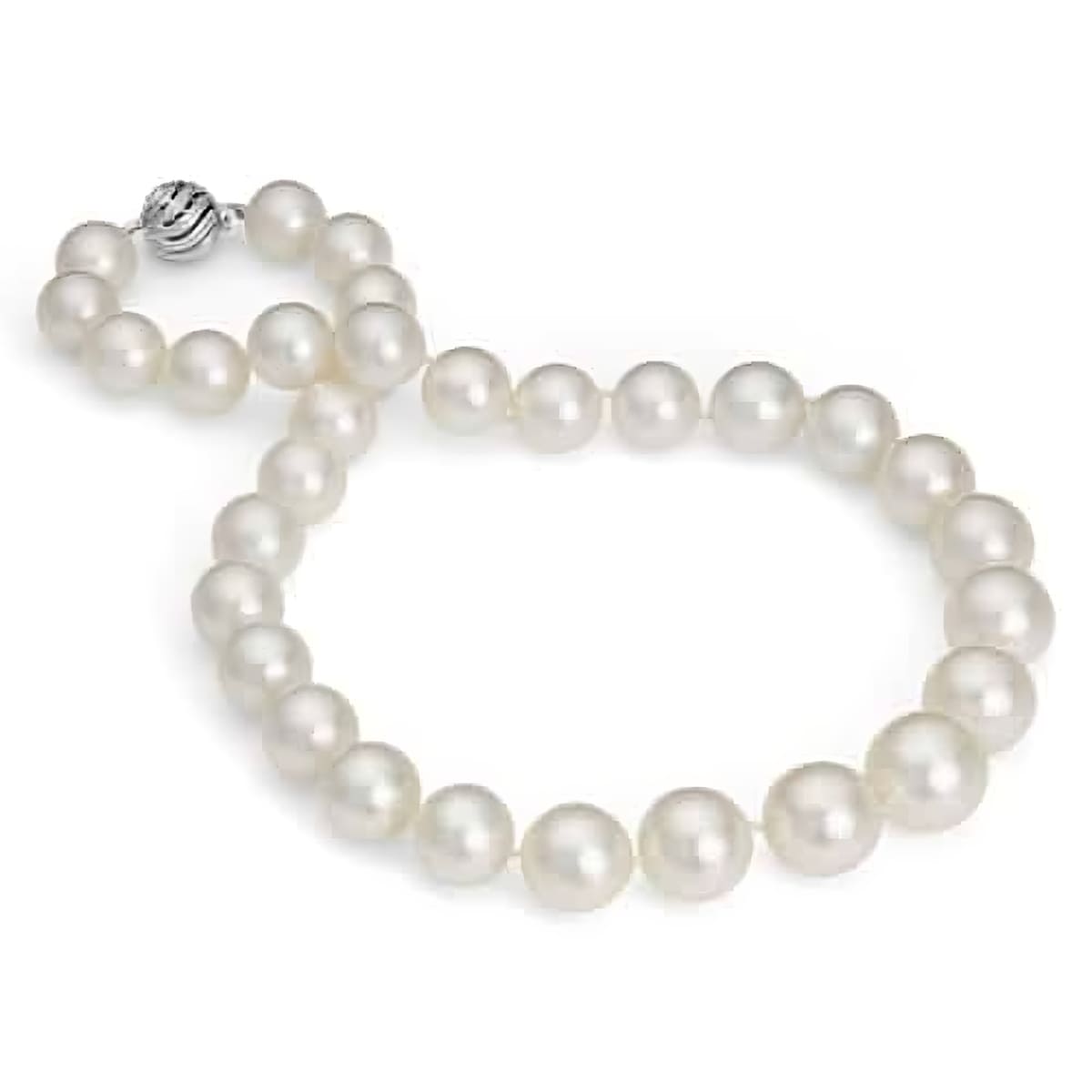Pearls are the dowager queens of the fine jewelry world. Their soft, breathtaking luster is as at home in a sunlit estate garden party as it is in the smoky shadows of your favorite speakeasy.
Favored by fashionistas throughout history from Grace Kelly and Coco Chanel through to Scarlett Johansson and Katy Perry, pearls bring a timeless elegance to both vintage-inspired and contemporary styles.
However, their universal appeal and increasing value has led to an insurgence of fakes in the jewelry market. It’s important to know what to look for in your pearl jewelry to make sure you’re getting the real deal. There are plenty of fakes out there, but we have some quick and easy tricks to help you determine if that shiny strand is the real deal.
What Counts As a “Real” Pearl?
Pearls are what’s known as an organic gemstone, meaning they come from a living thing(other examples of organic gemstones are amber and jet, both of which start their journey in trees).
Broadly speaking, real pearls fall under three categories:
- Cultured freshwater pearls (pearls that have been farmed in bodies of fresh water)
- Cultured saltwater pearls (pearls that have been farmed in designated areas of the ocean)
- Natural pearls (that is, “wild” pearls that formed without any human intervention at all)
Though the process of growth and the species of oyster can vary from one type of pearl to another, their mineral composition is essentially the same. This is what differentiates real pearls from imitations.
How Can I Tell If a Pearl is Real?
Real pearls emit an internal glow that no imitation can match. But if you haven’t seen many pearls, that special glow may not be obvious to you. Until you’ve seen enough pearls side by side to develop the eye for it, there are a few things you can look for.
Look for knotting
Because pearls can be quite delicate, most pearl necklaces will be strung with tiny knots in between each one. This keeps them from bumping and rubbing against each other and wearing down.
Pearl knotting is a difficult and meticulous skill, and most jewelers wouldn’t be willing to invest the time to knot imitation pearl strands. While this can be a good indication, it isn’t definitive; not all real pearl strands come knotted and sometimes imitation ones will be to make them look more like real pearls.
Examine the drill hole
While you’re looking at the knots, have a closer look at the hole that’s drilled through each pearl. The hole of an imitation pearl will be large and uneven, and you might see places where the coating is beginning to peel away from the bead — this is especially prominent in older vintage pieces. If you can manage to catch a glimpse inside the hole, you’ll often find that the color inside the bead doesn’t quite match the coating on the outside.
A real pearl, by contrast, will have a clean, even hole running through the middle. You might see slight traces of powder where it’s been rubbed by the string. The hole will also be very narrow; wholesale pearls are usually sold by weight, and drilling the smallest hole possible means more weight retention (and more profit).
Examine the surface
While the first two tests only apply to pearl necklaces, this one can be done with any kind of pearl jewelry.
Like most things in nature, pearls do not grow perfectly uniformly. Real pearls will have minute surface irregularities such as bumps and dimples. While these features are less perceptible in very high quality pearls, all will have some sort of defining characteristic if you look very closely. Fake pearls, on the other hand, will be consistent and smooth all the way around.
 Pin
Pin Pin
Pin Pin
Pin Pin
PinRoll it around
This test, unfortunately, only works with loose pearls. As we saw above, most real pearls are not supermodel material. They have irregularities and inconsistencies, including in their shape. If you try to roll it in a straight line, chances are it will wobblea little and tilt off course. An imitation pearl will be perfectly round and will roll evenly.
Note that this test is a little trickier with very high-quality pearls. This is actually something gem graders do when evaluating wholesale pearls. Round pearls are more valuable than off-round ones, and perfectly spherical ones that roll in a straight line are the most desirable of all.
Taste it… sort of
This oft-cited pearl test is one of those old wives’ tales that actually works. Take the pearl and rub it (gently!) against the surface of your front tooth. Your teeth are quite sensitive and can pick up minute surface variations. A genuine pearl will have a rough, sandy quality to it while a fake will feel smooth and plasticky.
Other tips and tricks
Other indications include temperature and weight — real pearls have a substantial heft to them compared to fakes, and will feel cool to the touch — as well as price and provenance.
The price of real pearl jewelry reflects its value, and any new pearl jewelry from a reputable retailer should come with some sort of grading certificate or documentation. Fake pearls are usually sold for very little.
The exception? Costume pearls from big name luxury brands, such as Chanel or Dior. These synthetic pearls can sell for big money, whether new or vintage. However, these items should always be sold with full honesty and transparency. If you’re not sure, see if you can view the item in person and do some of these tests above.
Can I Tell If a Pearl is Natural or Cultured?
 Pin
PinIt is very difficult to see the difference between a natural and cultured pearl with the naked eye. The vast, vast majority of pearls sold on the jewelry market these days are cultured, and they are accepted as the standard for “real” pearls. Most natural pearls that come up are exquisite vintage pieces that sell for big ticket prices.
If you think your vintage pearl strand might be made of natural pearls, you can look at them against a very strong light. A cultured saltwater pearl will glow darker in the center where the base of the pearl was implanted. Natural pearls, by contrast, will glow more uniformly.
It can be almost impossible to tell the difference between natural and freshwater pearls, however, because their formation process is so similar.
Unfortunately, there’s a lot of misinformation about “natural” pearls, and some jewelry retailers unknowingly use the term incorrectly. The only way to know for sure if your pearl is of natural origin is to take it to a gemologist, where they can X-ray it and examine the patterns of growth inside the pearl.
How Much Do Pearls Cost?
Pearls are judged on seven consistent quality factors:
- Luster
- Shape
- Nacre Quality
- Color
- Surface Quality
- Matching (or craftsmanship)
- Size
The highest quality pearls will be perfectly round, bright, smooth, and consistent, with sharp high-contrast reflections.
Depending on these value factors, you can find real pearls at very affordable entry-level prices going up to tens or hundreds of thousands of dollars for bright, perfectly matched designer south sea pearls.
To give you some real examples, here is what you can expect to pay for Pearl Strands with 18k White Gold.
| Classic Akoya Pearl Strands | Premier Akoya Pearl Strands | Tahitian Pearl Strands | South Sea Pearl Strands | |
| 6.5-7.0mm | Starting at $1,100 | Starting at $3,750 | ||
| 7.0-7.5mm | Starting at $1,650 | Starting at $4,250 | ||
| 7.5-8.0mm | Starting at $1,950 | Starting at $5,000 | ||
| 8.0-8.5mm | Starting at $2,350 | Starting at $5,650 | Starting at $4,650 | Starting at $9,990 |
| 10-12.2mm | Starting at $12,750 | Starting at $16,250 |
Take a look at this gorgeous Classic Freshwater Cultured Pearl Strand Necklace made with 14k White Gold.
 Pin
PinEverything else being equal, for 16in length you can expect to pay:
- $350 for 6-6.5mm diameter
- $550 for 7-7.5mm diameter
- $675 for 7.5-8mm diameter
- $800 for 8-8.5mm diameter
See this article – How Much Are Pearls Really Worth? Read our Quick Guide to Find Out – for some more insights on prices and value.
A Note On Costume Pearls
The vintage fashion industry boasts a proud lineage of imitation pearl strands. Mademoiselle Coco Chanel was famous for barreling through all sorts of fashion “rules” of her day – one of the things she was notorious for was wearing both real and imitation pearls at the same time(!).
One of the unfortunate truths about real pearls is that they are quite delicate and are easily damaged by the harsh chemicals found in things like detergent, hair spray, and perfume.
If you’re someone who uses these products a lot, a strand of vintage costume pearls might be the right choice for you. Alternatively, you could have costume pearl jewelry for day-to-day wear and keep your real pearls for special occasions.
Or, like, Mlle. Chanel, you could throw them all on at the same time. Make your own rules.
Practically Pearl-Fect
Evaluating pearl jewelry takes a careful eye, but with some patience and attention you can get a pretty good idea of whether or not your jewelry is made from real pearls.
Look at the craftsmanship of the piece, the natural surface markings and characteristics, and the quintessential, distinctive pearlescent glow that we call luster. Use all your senses to get a feel for its weight, reflective qualities, and the way it rests against your skin.
Nothing quite compares to real pearl jewelry, but it’s worth remembering that imitation pearls have their place not only as an affordable easy-care alternative, but in our cultural history. So use these tricks and tips when shopping for natural, cultured, or imitation pearls to make sure you’re making informed choices and proudly wearing the style that you love.
Did you find this post useful? Then save THIS PIN below to your Jewelry board for later!
 Pin
Pin












Joanne Mahuka
October 16, 2021 at 11:33 pmVery helpful.
Helpful ReviewZadok Jewelers
April 25, 2024 at 1:37 amAbsolutely stunning jewelry! The pearls are classic and elegant, enhancing any look effortlessly. Appreciate the timeless beauty and authenticity. Lovely pieces to cherish for a lifetime.
Helpful Review